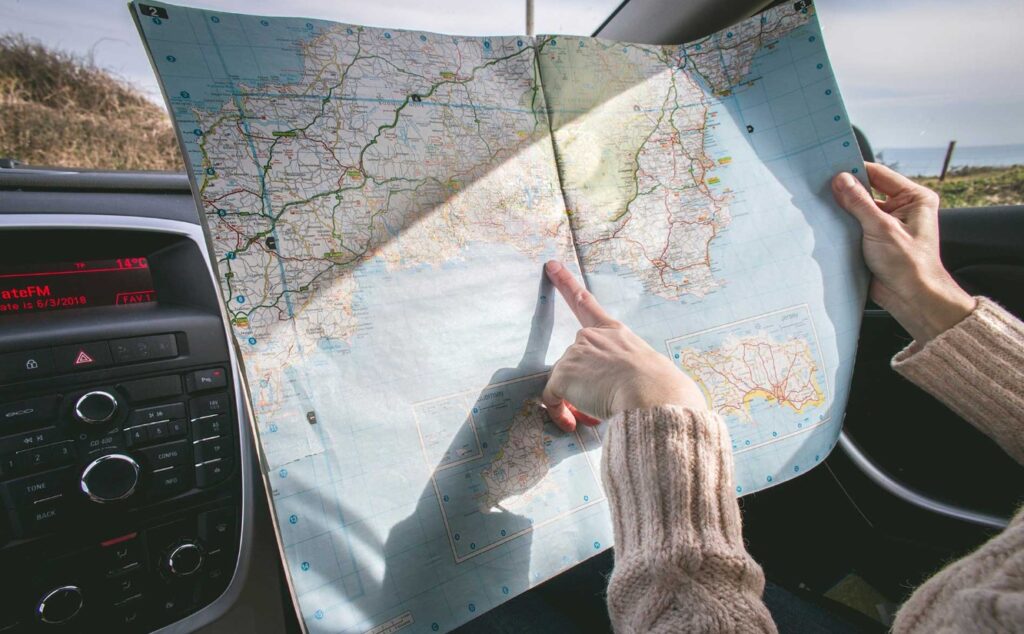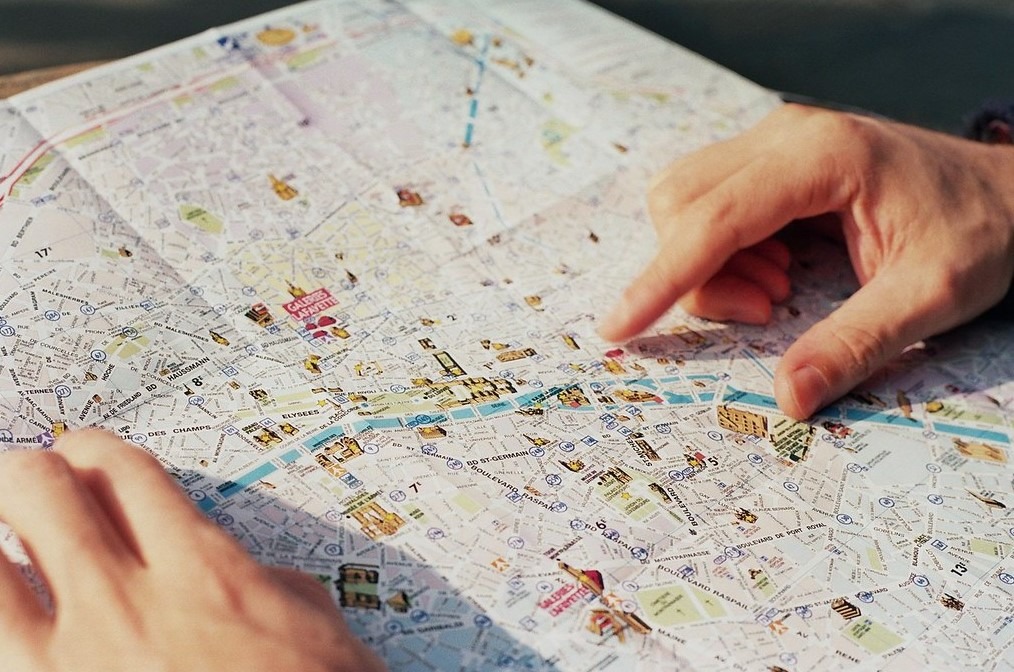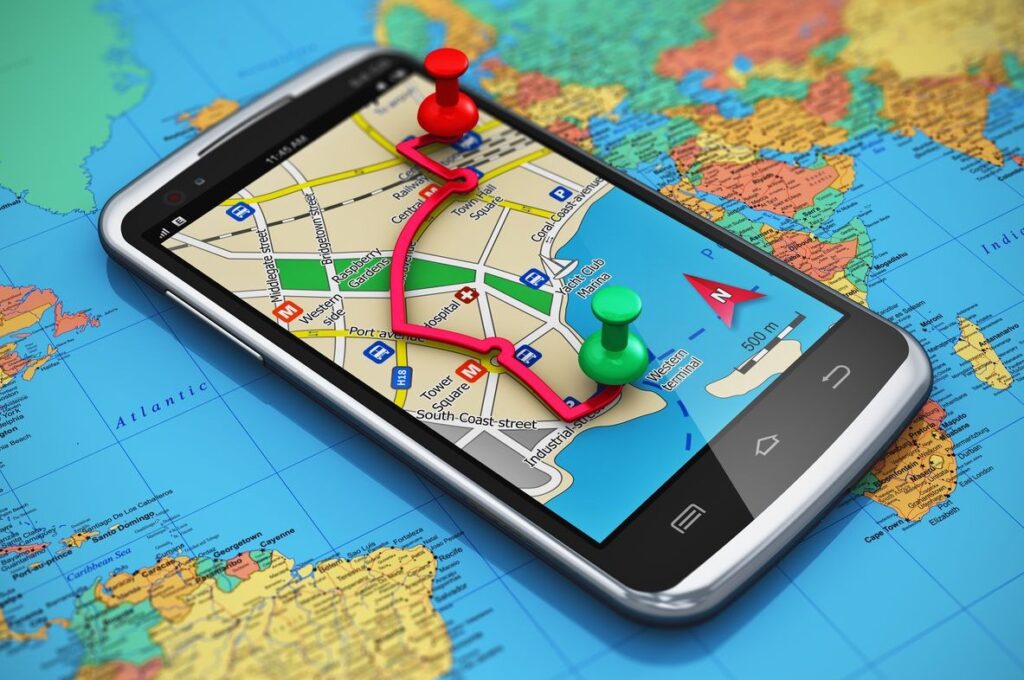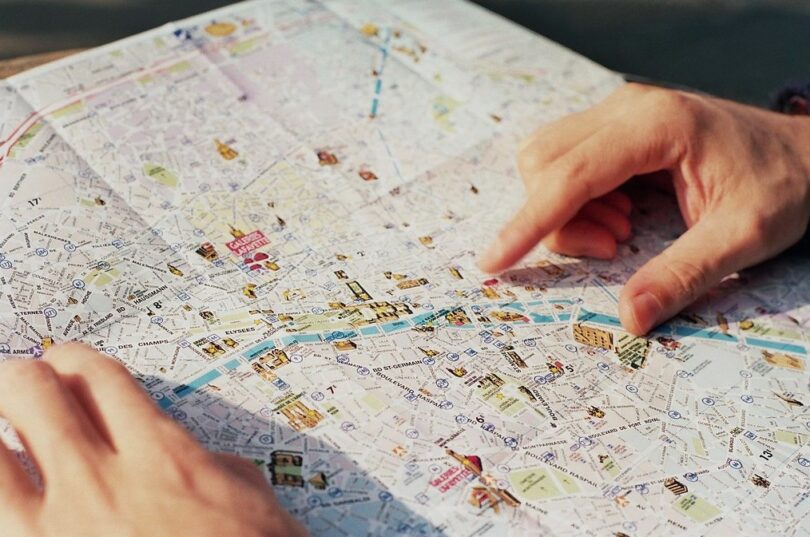In our technology-driven era, where smartphones and digital devices often dominate our lives, a question arises: “Do traditional paper maps still have relevance?” Despite the pervasive influence of digital navigation, there are still staunch proponents of the classic paper map. Let’s explore the reasons behind this and assess the advantages and disadvantages of both options.
The Allure of Paper Maps:

For many, paper maps are not just about finding directions; they are about experiencing the journey itself. The tactile pleasure of unfolding a map, tracing your route with your fingers, and the anticipation it fosters is irreplaceable. It offers an immersive experience that tapping on a screen simply cannot replicate. Furthermore, a paper map provides a holistic view, enabling a comprehensive understanding of the surrounding areas and the flexibility to plan alternative routes.
Accuracy Considerations:

One might wonder about the reliability of paper maps in today’s ever-changing landscape. Generally, for well-established roads and cities, they hold up well. Recognized cartographic authorities ensure periodic updates. However, when venturing off the beaten path or navigating areas undergoing rapid infrastructural changes, digital maps, with their real-time updates, often have the advantage. They provide immediate alerts about road closures, detours, and current traffic conditions – something static paper maps cannot match.
The Ascendance of GPS:

GPS technology has undeniably revolutionized the way we navigate. Enter your destination, and presto! Instant, step-by-step directions make the journey seamless. Modern GPS devices and apps offer a plethora of features – voice-guided instructions, estimated arrival times, and highlighting points of interest, to name a few. Their dynamic nature, continuously adapting to road conditions and suggesting alternative routes, makes them an invaluable tool in today’s fast-paced world.
The Verdict:
So, are you in favor of paper maps or digital navigation? The choice is subjective and largely dependent on individual preferences and the nature of the journey. Those who prefer a tangible, immersive experience may lean towards paper maps, particularly in situations involving remote adventures. On the other hand, those seeking real-time updates and a hassle-free experience may opt for digital counterparts. Often, experienced travelers recommend a balanced approach: primarily relying on digital aids while keeping a trusty paper map on hand as a backup.
In conclusion, while the digital age has influenced many to embrace GPS and online maps, the allure of paper maps remains strong for some. Their tactile nature, nostalgic appeal, and comprehensive perspective make them invaluable to many travelers. However, the convenience, real-time updates, and adaptability of digital navigation tools cannot be ignored. The choice between them is subjective, based on individual preferences and the specific circumstances of each journey.








